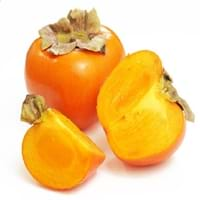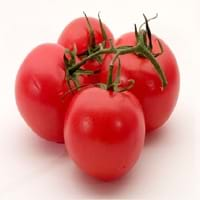Health Benefits
Anti-oxidant properties, Beneficial in curing fever, Cancer prevention, Heart care, Reduces nervous tension
Anti depressant, Cancer prevention, Heart care, Muscle pain relief, Prevents constipation, Regulation of heart rate, Weight loss properties
General Benefits
Anti-inflammatory properties, Boosts immune system, Controls blood pressure, Digestive aid, Eye care, Fights against infections, Helps in weight loss, Improves blood circulation
Controls blood pressure, Eye care, Maintains healthy cholesterol level, Strengthens bones
Skin Benefits
Anti-aging benefits, Brightens and lightens complexion, Reduces wrinkles
Anti-aging benefits, Heals sunburn, Skin rejuvenation, Treatment of acne, Treatment of skin diseases
Hair Benefits
Good conditioner, Promotes longer and healthier hair, Treatment of dandruff
Good conditioner, Prevents hair loss, Softening mask
Allergy Symptoms
Abdominal pains, Anaphylaxis, Inflammation
Anaphylaxis, Coughing, Diarrhea, Eczema, Hives, Itching sensation in throat, Nausea, Skin Rashes, Runny nose, Sneezing, Swelling of mouth, tongue or lips, Vomiting, Wheezing
Side Effects
Affects blood glucose levels, Decrease in blood sugar levels, Coagulation
Heart burn
Best Time to Eat
Along with meal, As a snack in the late afternoon, Don't consume at night and before bed, Eat the fresh ones, avoid mixing with any other foods, don't eat after meal.
Along with meal, Don't consume at night and before bed, Morning time (before lunch)
Vitamin A (Retinol)
Not Available
Vitamin B1 (Thiamin)
Not Available
Vitamin B2 (Riboflavin)
Not Available
Vitamin B3 (Niacin)
Not Available
Vitamin B5 (Pantothenic Acid)
Not Available
Vitamin B6 (Pyridoxin)
Not Available
Vitamin B9 (Folic acid)
Not Available
Vitamin C (Ascorbic Acid)
Vitamin E (Tocopherole)
Not Available
Vitamin K (Phyllochinone)
Not Available
Lutein+Zeaxanthin
Not Available
Phytosterol
Not Available
Calories in Fresh Fruit with Peel
Calories in Fresh Fruit without Peel
Not Available
Not Available
Calories in Frozen Form
Not Available
Calories in Canned Form
Not Available
Type
Berry, Tree fruit
Berry, Fruit vegetable
Season
Autumn, Winter
All seasons
Varieties
Early Golden, John Rick, Miller, Woolbright and Ennis
Better Boy, Early Girl, Beefsteak, Beefmaster, Pink Brandywinem, Caspian Pink, Thai Pinks, Hawaiian Pineapple, Kellogg’s Breakfast, Cherokee Purple, Black Ethiopian and Paul Robeson
Color
Orange, Red, Yellow
Green, Orange, Pink, Purplish black, Red, White, Yellow
Origin
Eastern United States
Central America, South America
Soil Type
Sandy loam, Well-drained
Loam, Sandy loam
Climatic Conditions
Can tolerate wide range of climates, Sunny
Sunny, Warm
Facts about
- It is said that formation of seeds inside the persimmon fruit shows what type of winter is coming(type of snow).
- There are about 2000 varieties of this fruit.
- The American persimmon has another name 'Possumwood'.
- Around 10,000 varieties of tomatoes are grown in the world.
- In Buñol, people celebrate the Tomatina festival where around 1.5 lakh tomatoes are used.
- As per Guinness book of records, heaviest tomato weighed 3.51 kg.
Other Countries
Azerbaijan, Brazil, Costa Rica, Japan, Korea, Pakistan
Brazil, Egypt, India, Iran, Italy, Mexico, Spain, Turkey, United States of America
Top Importer
United States of America
Nigeria
Top Exporter
United States of America
Netherlands
Botanical Name
Diospyros virginiana
Solanum lycopersicum
Synonym
Not Available
Lycopersicon esculentum
Subkingdom
Tracheobionta
Tracheobionta
Division
Magnoliophyta
Magnoliophyta
Class
Magnoliopsida
Magnoliopsida
Subclass
Dillenhidae
Asteridae
Family
Ebenaceae
Solanaceae
Species
D. virginiana
S. lycopersicum
Generic Group
Not Available
Nightshade
Difference Between American Persimmon and Tomato
We might think that American Persimmon and Tomato are similar with respect to nutritional value and health benefits. But the nutrient content of both fruits is different. American Persimmon and Tomato Facts such as their taste, shape, color, and size are also distinct. The difference between American Persimmon and Tomato is explained here.
The amount of calories in 100 gm of fresh American Persimmon and Tomato with peel is 127.00 kcal and 18.00 kcal and the amount of calories without peel is Not Available and Not Available respectively. Thus, American Persimmon and Tomato belong to and category.These fruits might or might not differ with respect to their scientific classification. The order of American Persimmon and Tomato is Ericales and Solanales respectively. American Persimmon belongs to Ebenaceae family and Tomato belongs to Solanaceae family. American Persimmon belongs to Diospyros genus of D. virginiana species and Tomato belongs to Solanum genus of S. lycopersicum species. Beings plants, both fruits belong to Plantae Kingdom.









